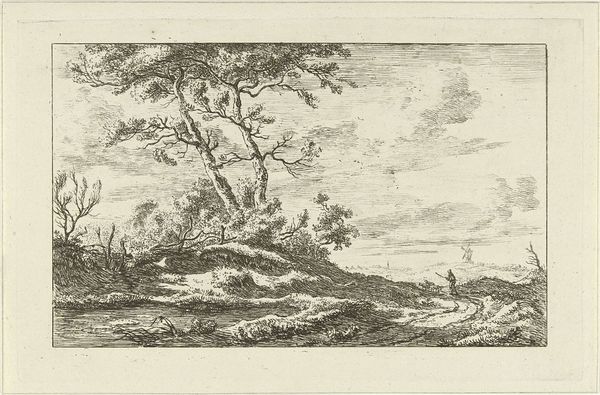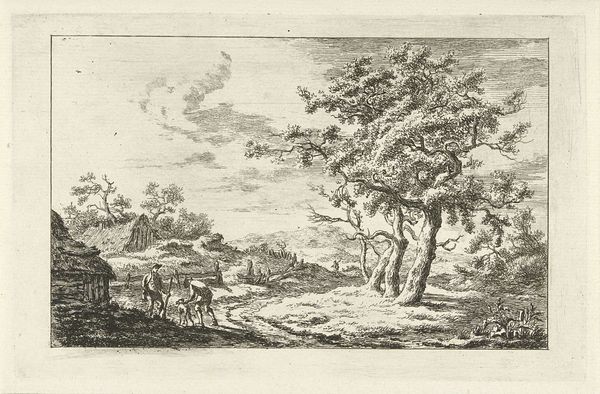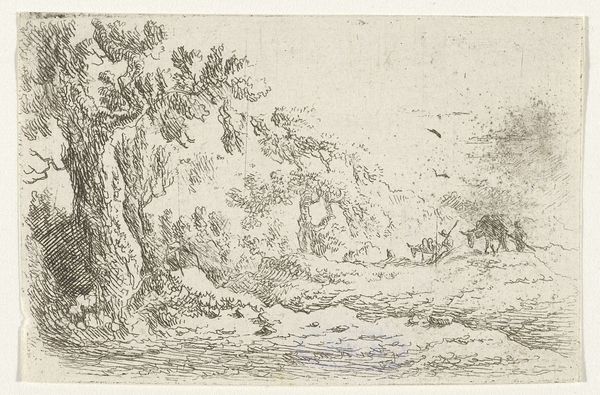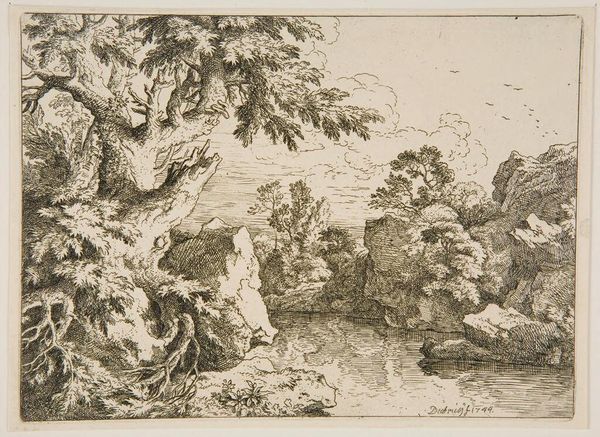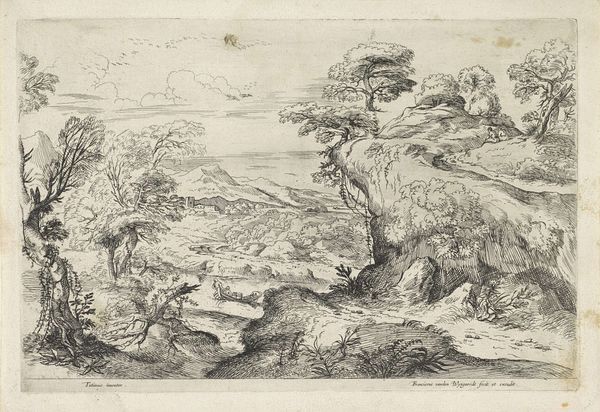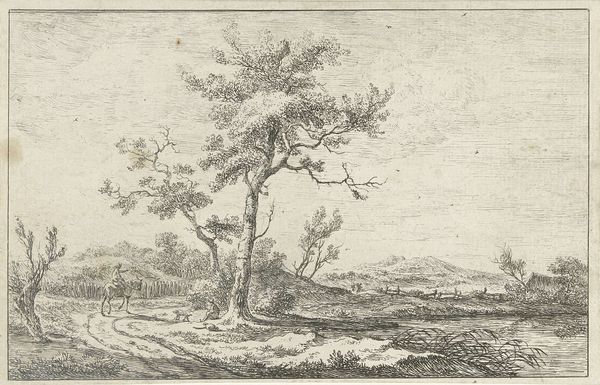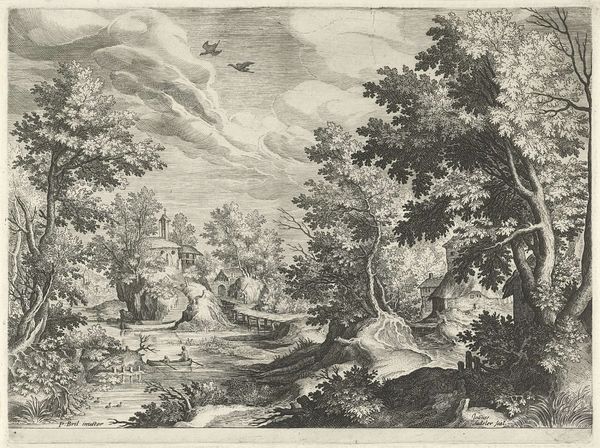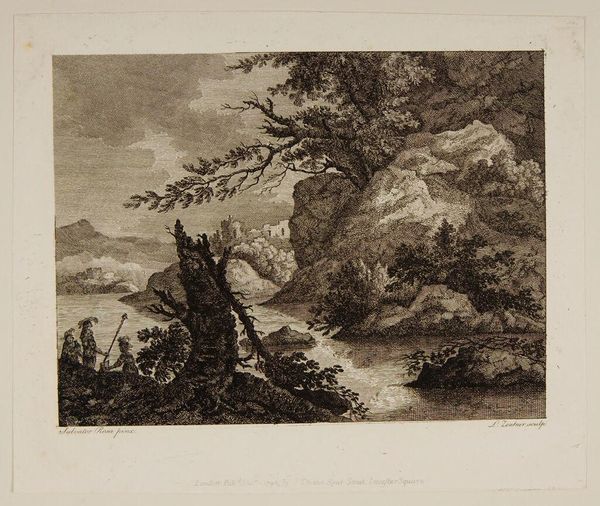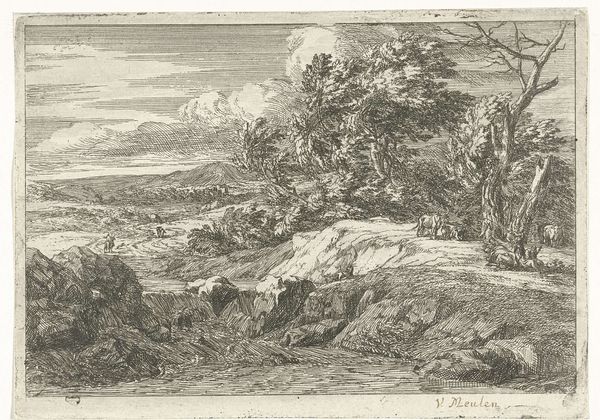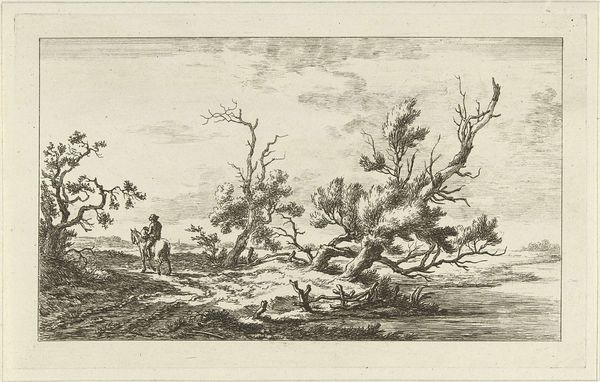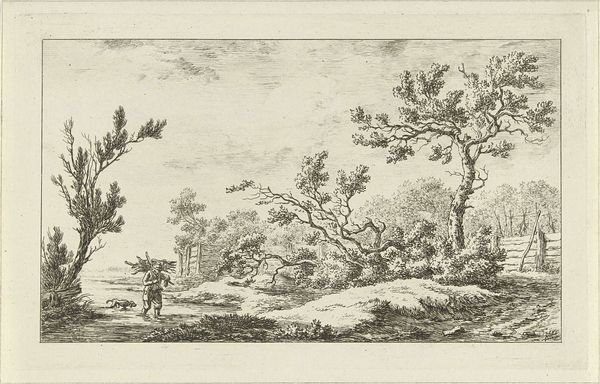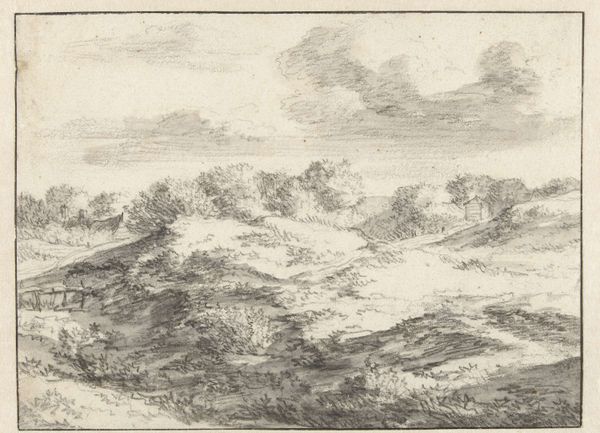
print, etching
# print
#
etching
#
landscape
#
romanticism
#
realism
Dimensions: height 155 mm, width 249 mm
Copyright: Rijks Museum: Open Domain
Curator: The turbulent landscape almost feels alive! There’s a dramatic intensity to it. Editor: Indeed! Today we’re observing "Paard met wagen in een landschap" - that translates to "Horse and Cart in a Landscape"- an etching by Carel Lodewijk Hansen. It dates from around 1780 to 1840 and exemplifies Dutch Romanticism tinged with the emerging Realist style. Curator: What strikes me immediately is the contrast in textures achieved through etching. Look at the wispy rain versus the rough, almost palpable, texture of the soil on the riverbank. It is quite visceral, how Hansen evokes this kind of feeling of labouring and weathering through nature. Editor: Yes, and considering the period, Hansen's choice of landscape isn't just picturesque; it can be interpreted as an intersection of emerging social changes impacting rural communities. We see a common form of transportation – horse and cart, but they're diminutive, highlighting how nature overshadows human endeavor. Curator: Exactly. Etchings, as printed multiples, democratized art viewing but also played a role in expanding commerce, shaping distribution networks dependent on the exploitation of nature's resources represented by the work’s landscape itself. I always try to investigate not only the artistry of art, but also the conditions for its arrival, as an object of commodity to market! Editor: Precisely! Think of the sociopolitical context—agrarian changes, rural labour—Hansen's decision to foreground this scene becomes significant. There is a sense of impending transition perhaps even hinting at class tensions amidst shifts in land usage. What are your thoughts about how that central towering tree plays into this dynamic? Curator: It is an element, for sure. The very gesture of the scene presents an observation from a distance as if reflecting a position between belonging and observing as if positioned within labour yet also alienated from its processes. It mirrors the social position Hansen occupies in mediating art's relationship between natural source and capital venture. Editor: I find this is such a resonant image with such subtle, multifaceted social commentary. It compels one to consider landscapes in relation to social dynamics and industrial advancement of that era. Curator: Yes, its appeal lies precisely in this intersection—how process and socio-historical moments can provide depth, revealing more layers, one printed line at a time.
Comments
No comments
Be the first to comment and join the conversation on the ultimate creative platform.
